Abstract
The relative importance of interreinforcement time and interreinforcement responses was evaluated by varying each independently. To do this, a blackout was presented after each nonreinforced response under both fixed-ratio and fixed-interval schedules of reinforcement. Manipulating the blackout duration under the fixed-ratio schedule caused interreinforcement time to vary without affecting the number of interreinforcement responses. Pigeons' post-reinforcement and post-blackout response latencies were found to increase linearly with interreinforcement time. Under the fixed-interval schedule, the same blackout manipulations changed the number of interreinforcement responses without affecting interreinforcement time. Post-reinforcement and post-blackout response latencies under this condition were approximately constant. These results suggest that responding is controlled by interreinforcement time and is not influenced by the number of responses emitted between reinforcements.
Full text
PDF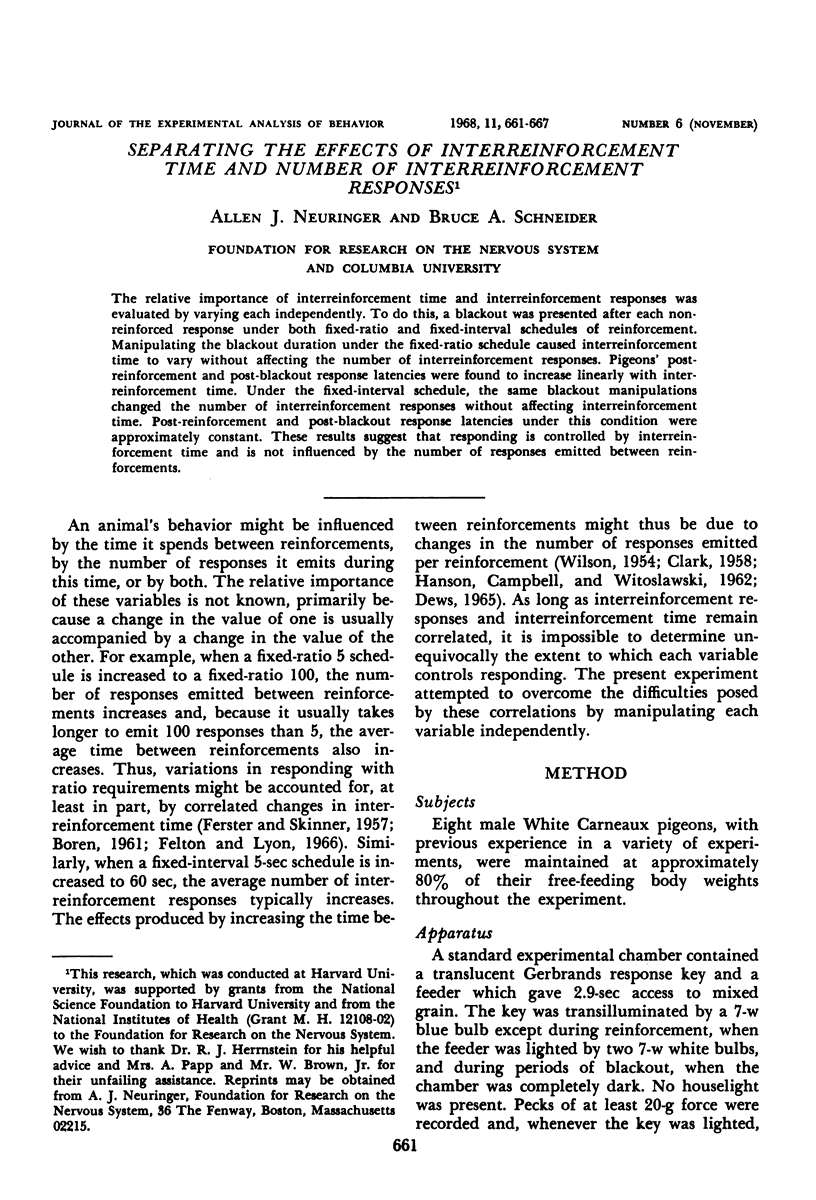
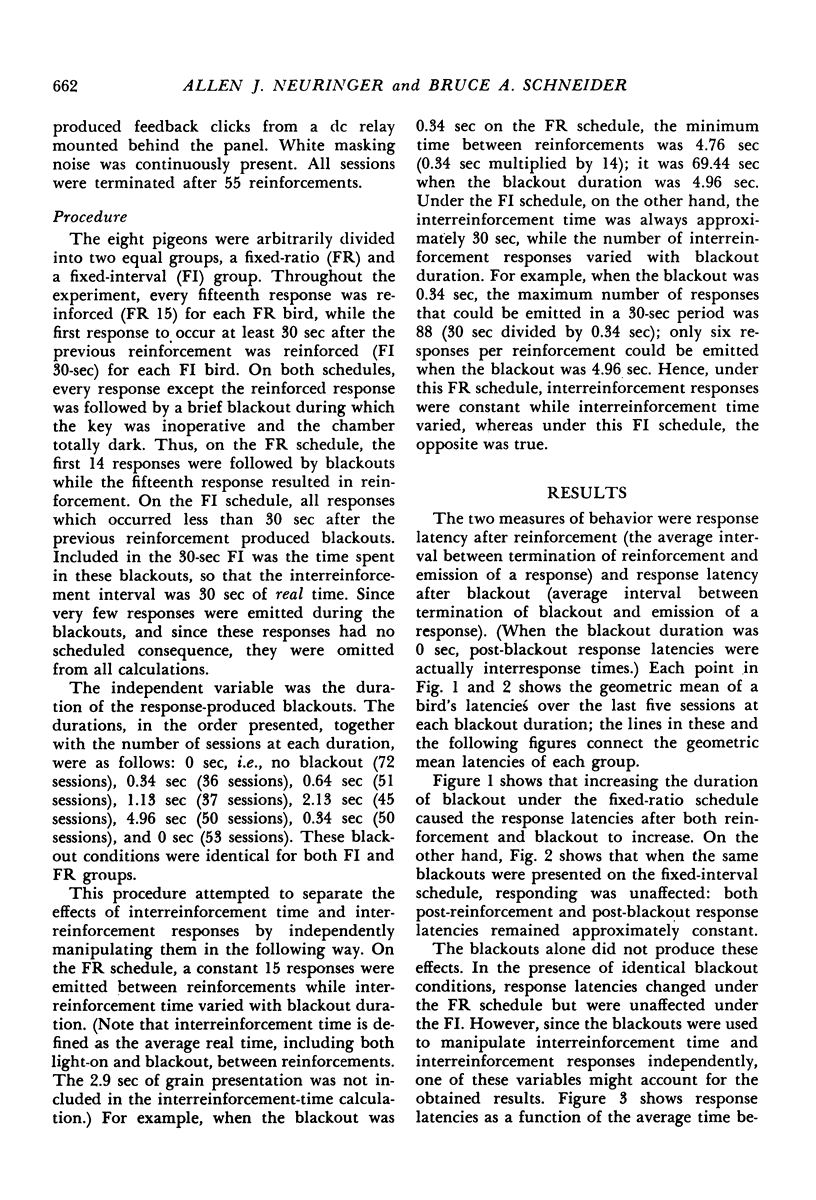
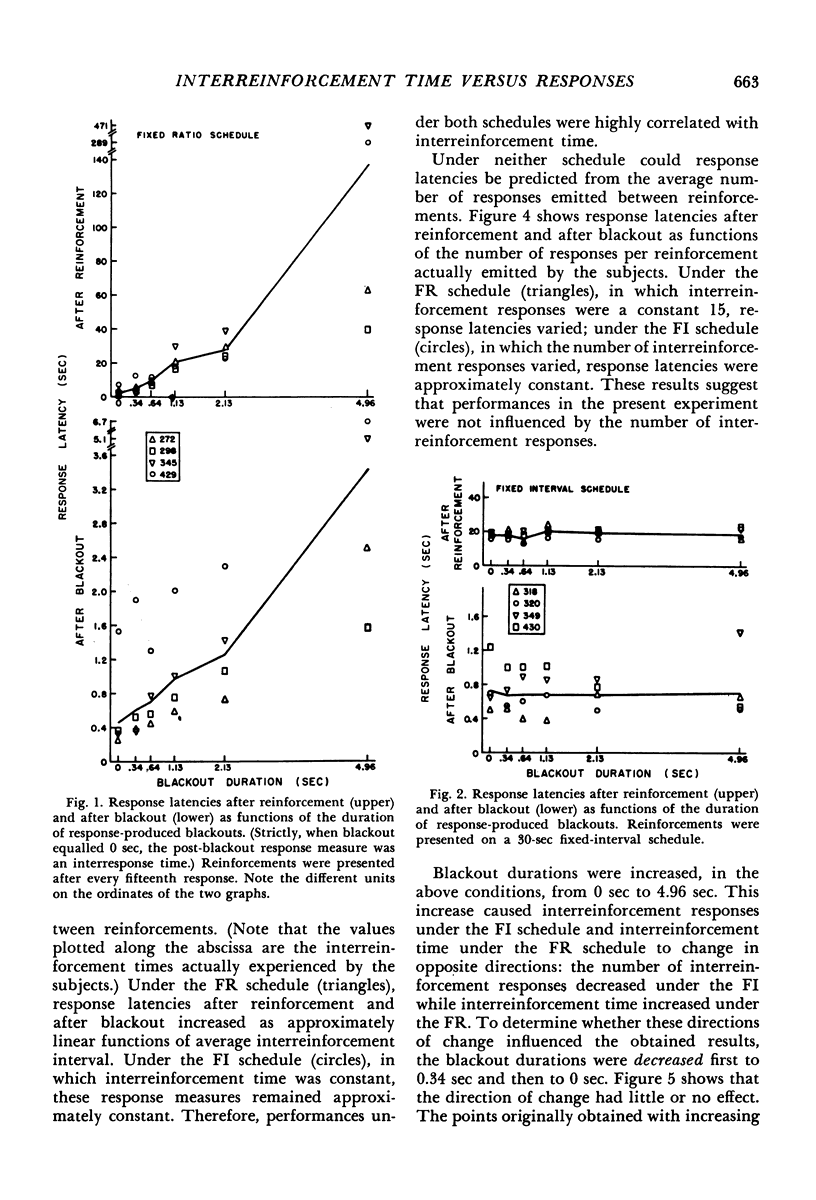
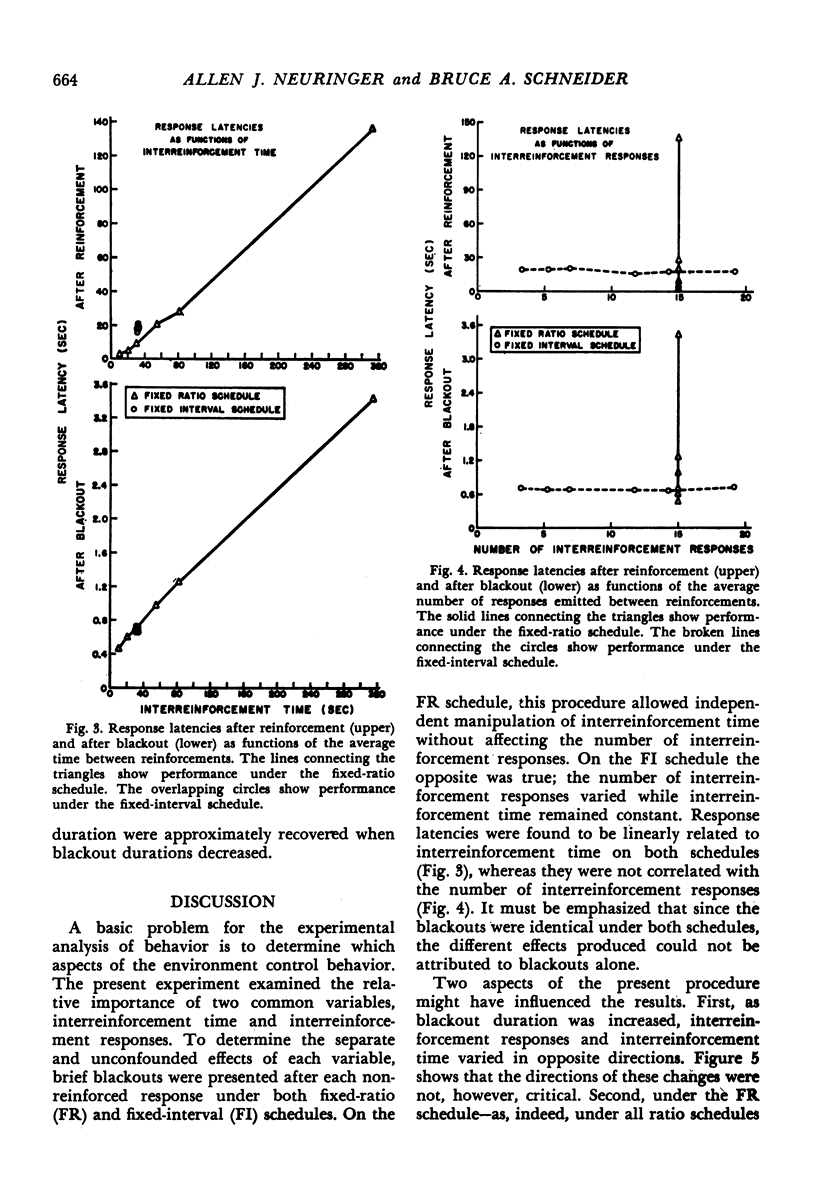
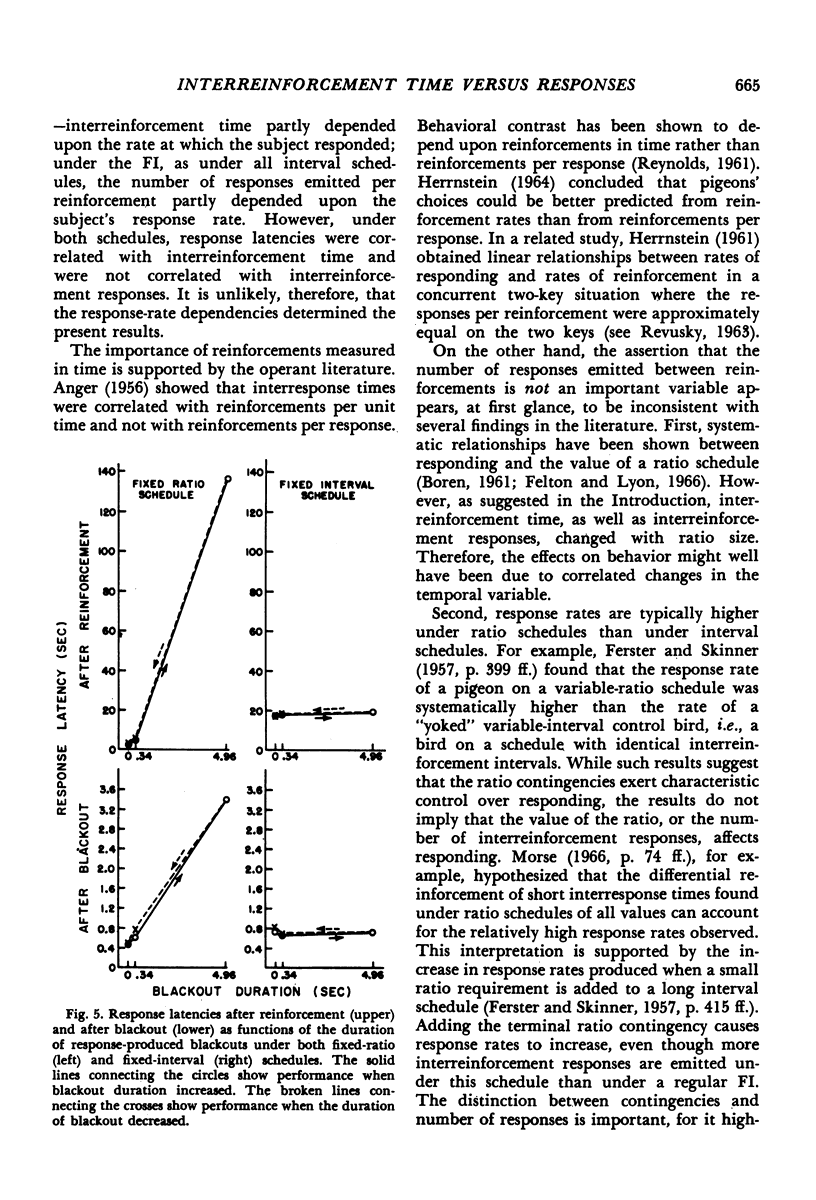
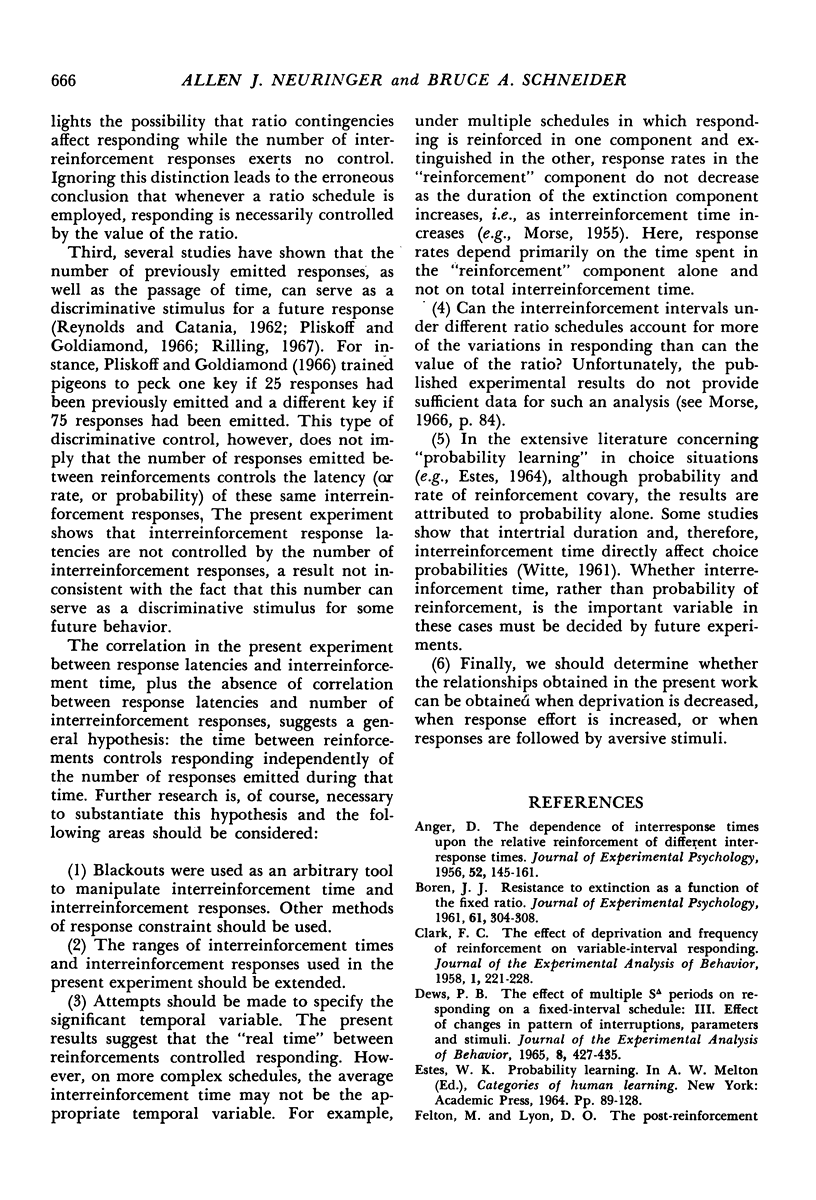
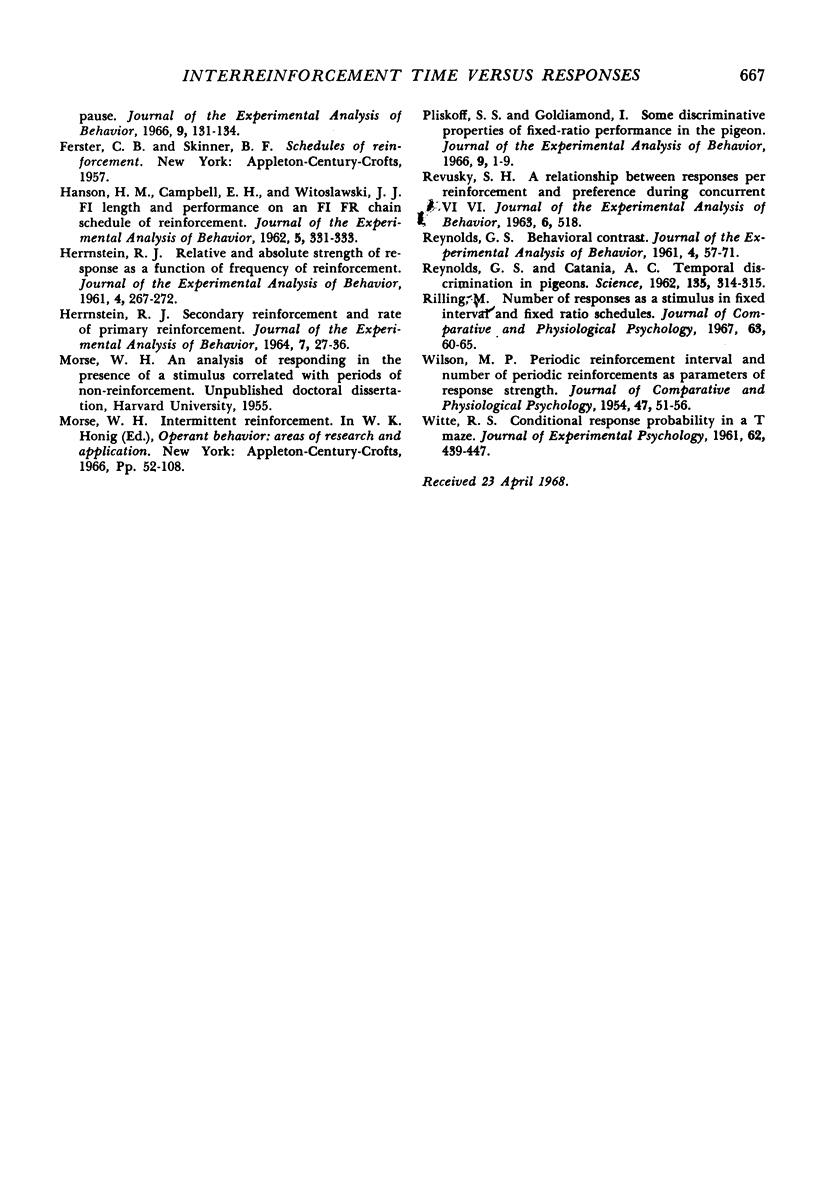
Selected References
These references are in PubMed. This may not be the complete list of references from this article.
- ANGER D. The dependence of interresponse times upon the relative reinforcement of different interresponse times. J Exp Psychol. 1956 Sep;52(3):145–161. doi: 10.1037/h0041255. [DOI] [PubMed] [Google Scholar]
- Clark F. C. The effect of deprivation and frequency of reinforcement on variable-interval responding. J Exp Anal Behav. 1958 Aug;1(3):221–228. doi: 10.1901/jeab.1958.1-221. [DOI] [PMC free article] [PubMed] [Google Scholar]
- Dews P. B. The effect of multiple S-delta periods on responding on a fixed-interval schedule: 3. Effect of changes in pattern of interruptions, parameters and stimuli. J Exp Anal Behav. 1965 Nov;8(6):427–435. doi: 10.1901/jeab.1965.8-427. [DOI] [PMC free article] [PubMed] [Google Scholar]
- Felton M., Lyon D. O. The post-reinforcement pause. J Exp Anal Behav. 1966 Mar;9(2):131–134. doi: 10.1901/jeab.1966.9-131. [DOI] [PMC free article] [PubMed] [Google Scholar]
- HANSON H. M., CAMPBELL E. H., WITOSLAWSKI J. J. FI length and performance of an FI FR chain schedule of reinforcement. J Exp Anal Behav. 1962 Jul;5:331–333. doi: 10.1901/jeab.1962.5-331. [DOI] [PMC free article] [PubMed] [Google Scholar]
- HERRNSTEIN R. J. Relative and absolute strength of response as a function of frequency of reinforcement. J Exp Anal Behav. 1961 Jul;4:267–272. doi: 10.1901/jeab.1961.4-267. [DOI] [PMC free article] [PubMed] [Google Scholar]
- HERRNSTEIN R. J. SECONDARY REINFORCEMENT AND RATE OF PRIMARY REINFORCEMENT. J Exp Anal Behav. 1964 Jan;7:27–36. doi: 10.1901/jeab.1964.7-27. [DOI] [PMC free article] [PubMed] [Google Scholar]
- Pliskoff S. S., Goldiamond I. Some discriminative properties of fixed ratio performance in the pigeon. J Exp Anal Behav. 1966 Jan;9(1):1–9. doi: 10.1901/jeab.1966.9-1. [DOI] [PMC free article] [PubMed] [Google Scholar]
- REVUSKY S. H. A RELATIONSHIP BETWEEN RESPONSES PER REINFORCEMENT AND PREFERENCE DURING CONCURRENT. VI. J Exp Anal Behav. 1963 Oct;6:518–518. doi: 10.1901/jeab.1963.6-518. [DOI] [PMC free article] [PubMed] [Google Scholar]
- REYNOLDS G. S. Behavioral contrast. J Exp Anal Behav. 1961 Jan;4:57–71. doi: 10.1901/jeab.1961.4-57. [DOI] [PMC free article] [PubMed] [Google Scholar]
- REYNOLDS G. S., CATANIA A. C. Temporal discrimination in pigeons. Science. 1962 Jan 26;135(3500):314–315. doi: 10.1126/science.135.3500.314. [DOI] [PubMed] [Google Scholar]
- Rilling M. Number of responses as a stimulus in fixed interval and fixed ratio schedules. J Comp Physiol Psychol. 1967 Feb;63(1):60–65. doi: 10.1037/h0024164. [DOI] [PubMed] [Google Scholar]
- WILSON M. P. Periodic reinforcement interval and number of periodic reinforcements as parameters of response strength. J Comp Physiol Psychol. 1954 Feb;47(1):51–56. doi: 10.1037/h0057224. [DOI] [PubMed] [Google Scholar]
- WITTE R. S. Conditional response probability in a T maze. J Exp Psychol. 1961 Nov;62:439–447. doi: 10.1037/h0048157. [DOI] [PubMed] [Google Scholar]


